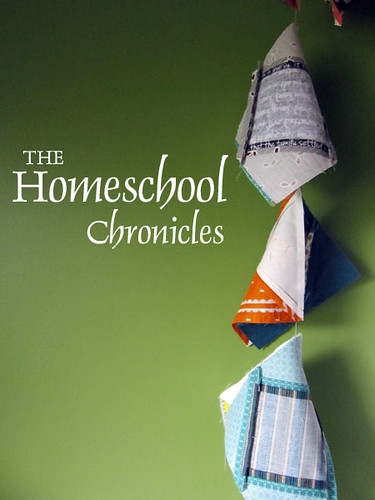my Recipe for a Kindergarten at Home
 This is the season when homeschoolers start dreaming big dreams for the next school year. Yes, I know it's kind of early, but I just can't resist! It's so fun to consider curriculum options and to ask my kid, "So...what do you want to learn in third grade?"
This is the season when homeschoolers start dreaming big dreams for the next school year. Yes, I know it's kind of early, but I just can't resist! It's so fun to consider curriculum options and to ask my kid, "So...what do you want to learn in third grade?"Before my mind moves on completely from Liam's kindergarten year, I want to share my recipe for kindergarten. Doing kindergarten at home is a great way to enjoy your little one's childhood just a little bit longer! Especially for families in transition (moving) or with very young kindergartners, staying home might make more sense. In many European countries with excellent education results, children don't start formal academics (how to read, basic arithmetic) until they are 6 or 7. One reason we do kindergarten at home is to allow for more important learning opportunities (see my blog post from 2009).
Kindergarten at home is easy. The key ingredient is your loving family. The action? Just living everyday life together... cooking, keeping house, spending time in the dirt, exploring the great outdoors. Add some playdates for spice and a generous helping of thoughtfully chosen resources. Here are some resources I've used:






If you are a Christian, we love The Jesus Storybook Bible

 |
| Liam in art area, 2010 |
In addition to book resources, your at home kindergarten will be greatly enriched by an accessible art area. When I was setting ours up, I wrote a 5-part blog series on creating an art area for little ones (here's part 1), including what supplies we like to have on hand. That was especially useful during preschool years. Now Liam does mainly drawing and painting and some modeling. Also, consider simplifying and decluttering the toy shelf with open-ended, classic toys that invite creative play such as pretending and building. Soon you'll have a lovely home environment ripe for learning, growing and a gentle opening to all that the future holds.
I hope this list is helpful for those of you who might be considering a home kindergarten. Don't allow yourself to get overwhelmed because the essentials are so doable. You love your kid. You can read to her, give her opportunities to explore the natural world, to play with friends, to make stuff. That's a wonderful kindergarten!
And, for those for whom a traditional kindergarten is the family choice, you can of course take advantage of any of these resources to enrich the time you do spend together. Enjoy!
P.S. For Liam's kindergarten we're also using the Explode the Code primer series (Book A
P.S.S. Some of these links are affiliate Amazon links, which means I will earn a small percentage if you purchase anything after clicking over. You might want to use Amazon to learn more about these resources in the way of reviews and previews and such. That's how I consider books, anyways! Don't forget to check your local library too and save those pennies!